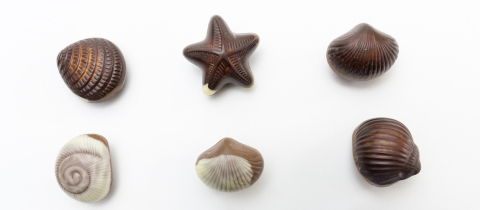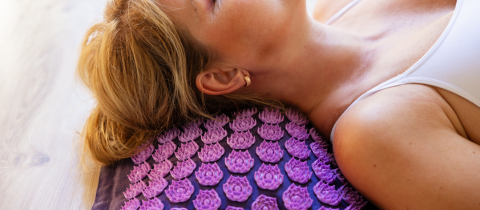Living for two semesters in McGill’s Upper Residence dorms, I dodged COVID-19 against all odds.
But a couple of days after checking out of the university residence, unscathed and uninfected, the virus hunted me down in my private Montreal apartment.
How did I survive the unsafe space of a university residence, untouched by outbreak after outbreak? After all, we shared dining halls and hallways, common rooms and dorm rooms, even bathroom sinks, showers and toilets in close proximity. All the while ordered to stay two metres apart.
We moved into the residence in late August, starting off with frosh week. New students like me encountered endless contradictions in a pandemic without end. Offered as a hybrid activity, frosh week allowed us to choose between in-person or online options to meet other students in our programs. Whether in person or online, the drinking started as early as breakfast. But vaccine passports were starting up and dance floors were closed down. That didn’t stop frosh organizers from throwing a massive beach party.
I suppose that’s why they call it “frosh flu.” Unsurprisingly, everyone I knew started to get sick. Yet everyone was also testing negative. My floor-mates were coughing in common areas — a no-no amid COVID. For people like me who’d almost forgotten the experience of catching colds, after being isolated for so long, it was a real-life reminder of how quickly viruses can and do spread.
The common claim that our immune system weakens after long periods of isolation is misleading. In fact, our immune systems have pretty good memories. By the time you reach the legal drinking age, you’ve likely encountered a large array of microbes that boost immunity — which remains robust. Hence, the cold viruses we encountered mid-pandemic were not up against weaker defenses.
You know the drill — use hand sanitizers, wear a mask, only four at a table. While these protocols made sense when strictly followed, what if we also brushed our teeth side-by-side? By reducing our exposure to a potential virus, we do decrease the viral load in the environment — and therefore the risk of transmission. Put another way, it’s always better to be exposed to only a little — for example, when passing one another in the shower — rather than breathing in a lot by ditching those masks entirely.
During first semester, only one guest could visit our rooms at a time — and only if they were from the same residence building. I can confidently say that no one followed these rules and easily managed to find ways to sneak around them. Young adults are going to take advantage of their newfound independence, no matter the obstacles. There’s always a trade-off between social distancing and dating. The majority of my residence had the “we’re young, so what” mentality. It is true that youth does benefit from a stronger immune system. Individuals under 24 have more cytokine proteins, which are what tells the innate immune system to respond to foreign invaders.
The concept of immune system memory also plays a role in our immune responses to COVID-19: children have more “naïve T-cells”, which turn into “memory T-cells” as we age. Naïve T-cells are matured white blood cells that have not yet come across an antigen. This means they are able to defend against new pathogens. Memory T-cells are able to quickly attack pathogens they have already come across, which is useless when faced with a new virus such as COVID for the first time.
But this is by no means a get-out-of-jail-free card. Younger individuals are still getting infected and rarely, even dying. True, hospitalization rates are lower, but the risk cannot be ignored. Given that so many young adults work in essential service jobs, and often have worse judgment concerning large gatherings and following protocols, you can imagine we are not entirely immune.
As Christmas approached, Omicron hit with full force — right in the middle of final exams. I had a few close calls myself, which made me worry about missing in-person evaluations and having to do a make-up exam many months later when the knowledge was no longer fresh in my brain. Memory T-cells couldn’t help me there. I wondered how many of my fellow students skipped a COVID test in order to avoid missing an exam, ignoring any symptoms in order to get it all over with before brain fog set in. I also had friends who deferred their exams as a way to escape the feeling of incarceration in their incubation pods set up in residence.
My last in-person exam, for PHYS 101, took place on Dec. 21 — the very day Quebec’s government ordered everything shut down (schools, bars, and gyms). Yet my 6:30 p.m. exam, held in the field house with hundreds of students, carried on regardless. We were sitting so close together that the back of one chair touched the front of the table behind, with just enough space rows for an examiner to walk between the rows. The evaluation lasted three hours. The U.S. Centers for Disease Control and Prevention (CDC) defines a close contact as someone less than six feet away from an infected person for 15 minutes. If I was less than six feet away from the people sitting on each side of me, and Quebec’s positivity rate the day before was 9.9%… you can crunch the numbers and get an idea of my risk exposure.
Like many universities, McGill opted for online classes during most of January. I decided to come back a few weeks into the semester. All meals were take-out and most of campus remained off-limits. The common room of my building was also converted into a rapid testing location by day and closed off by night. All students from neighbouring residences who showed symptoms assembled there, right next to our lobby — another congregate setting on my doorstep.
I was lucky to be surrounded by friends in early January, but it was still depressing. This partial shutdown took place in the dead of Montreal winter. The rooms in Upper Residence are no larger than prison cells, with cinder block walls to match. More mental health resources should have been offered at this time. Many students reported waiting months to get a one-hour appointment with a mental health counselor. “We shouldn’t have to fight for talking to a mental health professional,” a student wrote in an anonymous open letter to McGill shared widely in April. But the shutdown seemed to work; no major outbreaks occurred in the residence at the beginning of the semester. Life carried on and things started opening up in February.
The peak COVID count on campus and in residence occurred right after St. Patrick’s Day. A record 473 positive results were recorded the week of March 20th on campus alone. Why? This was one of the first warm weeks of the season, so many students went out and partied. St Patrick’s Day is a university holiday, prompting people to share beers, hit the bars and go to fraternities. We were finally allowed to have multiple guests in residence, even off-campus visitors. At the same time, the Omicron subvariant BA.2 became the dominant strain (it is 30-50% more contagious than the original Omicron).
Remember my reference to the frosh flu early in the year? We experienced another rapid-fire spread along the same lines — but this time it was Omicron. This was not a drill. At one point, three people on my floor were positive at the same time. Remember how we shared the same sinks, toilets, and showers? If someone tested positive, they were supposed to relocate to New Residence Hall — a hotel-style residence nearby equipped with private washrooms. An empty floor in that building was set aside for COVID-positive students. But by late March, the COVID floor was fully occupied, forcing my floor-mates to stay in situ, infected. Living next door to COVID-positive neighbours, it felt like I was part of an infectious diseases laboratory experiment without ever having to leave home.
Some true troopers — who somehow managed to avoid COVID while others fell victim to the virus — would bring sick friends takeout meals, because the food delivery service was unavailable. Others had no healthy friends left to do the heavy lifting. Given that the cafeterias couldn’t very well let them starve, administrators made an exception for COVID-positive students to leave their rooms for takeout meals. Which meant we could be standing in line at suppertime, not knowing who was sick (and most were). I remember going up the small, slow, unventilated elevator, when the door opened up to reveal someone I knew to be positive. They took the stairs instead.
My year of close calls came to a bittersweet end in April. Packing up to move out, I threw out all the negative rapid tests hanging on my wall as trophies. I had survived residence without catching COVID.
Which brings me to my positive test when I least expected it. I’d managed to avoid the virus during all the chaos and suspense, only to catch it in the seeming safety of my new Montreal apartment. All those artful dodges on campus had been in vain. Which proves that the only certainty of this pesky virus is its unpredictability.
Haleh Cohn just finished her first year at McGill University and is interested in the health sciences.







